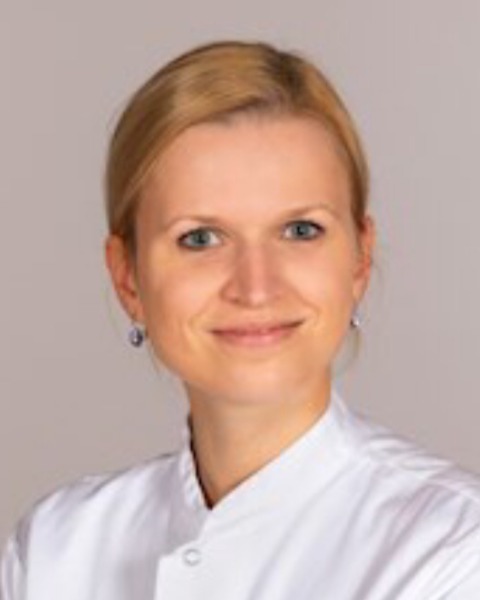Cerebrovascular
Exploring Cerebral Hemodynamic Status via Non-invasive BOLD Cerebrovascular Reactivity Mapping: A Journey Through Past, Present, and Future

Martina Sebok, MD PhD
Attending neurosurgeon
University Hospital Zurich
Zurich, Switzerland
Presenting Author(s)
Introduction: Various hemodynamic parameters can be utilized to categorize the severity of hemodynamic impairment in cerebrovascular diseases, reflecting typical alterations as cerebral perfusion pressure declines progressively. Unlike certain other techniques, CVR consistently decreases with increasing severity of hemodynamic failure (HF). This distinct characteristic positions CVR as a potentially optimal marker for staging hemodynamic failure.
Methods: The MRI-based BOLD technique coupled with a CO2 challenge is an emerging method enabling the evaluation of CVR. BOLD-CVR serves as a genuine brain stress test, facilitating the quantification of hemodynamic status at the brain parenchymal level. Previous studies have shown good agreement between BOLD-CVR and PET perfusion reserve. Our recent efforts have focused on establishing specific quantitative BOLD-CVR cutoff points to classify vascular territories into distinct stages of HF and validating the clinical utility of the BOLD-CVR technique.
Results: With reference to HF staging using 15O‐water PET, we established BOLD‐CVR cutoff points for different vascular territories. Notably, BOLD‐CVR applied to the middle cerebral artery territory demonstrated the highest consistency, with a sensitivity of 0.85, specificity of 0.81, and accuracy of 0.83 when classifying HF stage 2 versus HF stages 0 to 1. Furthermore, we have found that BOLD-CVR is able to predict the risk of ischemic stroke recurrence. The adjusted hazard ratio for ischemic stroke recurrence was 10.7 in patients with versus without significantly impaired CVR. Additionally, BOLD-CVR aids in better characterizing candidates for surgical revascularization via STA-MCA bypass.
Conclusion : By establishing BOLD‐CVR cutoff points an important contribution toward demonstrating the clinical utility of quantifying hemodynamic impairment using novel BOLD‐CVR was made. This clinically applicable technique allows to evaluate hemodynamic impairment and the risk of stroke recurrence and may replace techniques currently used in clinical routine as well as guide surgical decision-making regarding revascularization.
Methods: The MRI-based BOLD technique coupled with a CO2 challenge is an emerging method enabling the evaluation of CVR. BOLD-CVR serves as a genuine brain stress test, facilitating the quantification of hemodynamic status at the brain parenchymal level. Previous studies have shown good agreement between BOLD-CVR and PET perfusion reserve. Our recent efforts have focused on establishing specific quantitative BOLD-CVR cutoff points to classify vascular territories into distinct stages of HF and validating the clinical utility of the BOLD-CVR technique.
Results: With reference to HF staging using 15O‐water PET, we established BOLD‐CVR cutoff points for different vascular territories. Notably, BOLD‐CVR applied to the middle cerebral artery territory demonstrated the highest consistency, with a sensitivity of 0.85, specificity of 0.81, and accuracy of 0.83 when classifying HF stage 2 versus HF stages 0 to 1. Furthermore, we have found that BOLD-CVR is able to predict the risk of ischemic stroke recurrence. The adjusted hazard ratio for ischemic stroke recurrence was 10.7 in patients with versus without significantly impaired CVR. Additionally, BOLD-CVR aids in better characterizing candidates for surgical revascularization via STA-MCA bypass.
Conclusion : By establishing BOLD‐CVR cutoff points an important contribution toward demonstrating the clinical utility of quantifying hemodynamic impairment using novel BOLD‐CVR was made. This clinically applicable technique allows to evaluate hemodynamic impairment and the risk of stroke recurrence and may replace techniques currently used in clinical routine as well as guide surgical decision-making regarding revascularization.

.jpg)